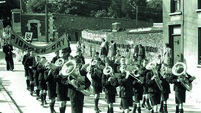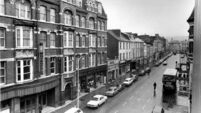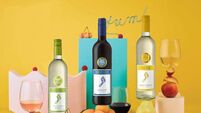Sweet Cork of thee: How I made donkey's gudge in 1960s
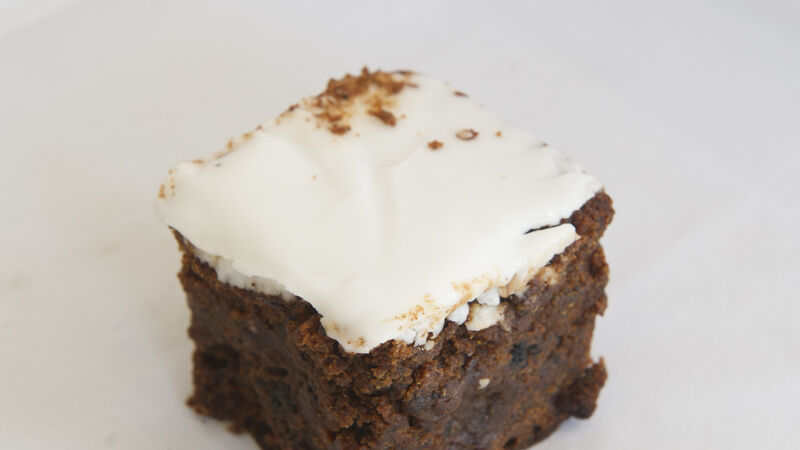
SWEET TREAT: Stephen McCarthy says the donkey's gudge he made looked like this
THE bakery cat was bald all down her left side. Not bald really, but singed to the skin.
There was a narrow gap between the side of the larger ovens and the wall, and that’s where she liked to sit, looking out at the crew as we made the bread and cakes in the summer of 1965, when I worked at Dineen’s Bakery in Shandon Street.
The wall of the ovens was on her left, and as she dozed she often leant over and rested against it. Hence her bald left flank. She would wake with a jerk and pull herself sharply as far from the hot oven as she could. But she never abandoned her post.
In truth, she wasn’t a great mouser. All bakeries were full of treats very desirable to mice and rats - flour, sugar, barm, and the returns, cakes and bread, that were stacked up in corners until they could be dealt with. As a result, all bakeries had cats.
She caught the odd mouse and rat, but never really came close to keeping them down. But she was part of our crew.
There was a routine and rhythm to days and weeks in the bakery. Bread and pastry was made every day but the finished products the pastry was turned into varied from day to day. Sweet pastry that was made into various slices and squares, doughnut pastry that went for doughnuts of various sorts, and puff pastry. One day we would make custard slices, the next cream slices.
We made bread daily, which comprised three different types. Skulls were most popular. The mixers were along one wall and the ovens another. In the middle was a large work table where baked trays of pastry were turned into cakes and pastries for sale.
Friday afternoon was the time to make Donkey’s Gudge. Its real name was Chester Cake, but nobody called it that - not the crew, the baker, or the customers.
It had a layer of pastry at the bottom then about 4cm of brown, sweet, moist and lumpy stuff. Then another layer of pastry on top, and finally icing.
It was made on big baking trays and when they were iced, they were cut into slices about 5cm by 5cm, and that is what went on sale - almost a cube. Sticky icing on top, stiff pastry holding the brown goo in place below. It was very popular.
This goo was the Gudge. The pastry still on the baking trays from their pre-bake was pushed aside in the cooling racks. The table had slots all around its edge.
After lunch on Friday, which was called dinner, we got out the side boards and slotted them into place. This gave sides above the surface of the table about 10cm high. The table had become a big tray in itself. Making the gudge there was simplicity itself.
All the bread returns for the week were given to the Pig Man who had a yard at the top of Cattle Lane, under an arch behind the houses at O’Briens shop. This was just up a lane from Dineen’s Bakery.

But the sweet returns did not go to the Pig Man. They were destined for another fate and stored in old paper sugar bags.
When it was time to begin the Donkey’s Gudge on Fridays, their contents were emptied on to the table. Old cakes, pastries and anything else that wasn’t bread went flying.
One of the gang had a hose on the go and the lot was given a good soaking. As it was going in and getting wet, another of the crew sprayed the wet mess with a brown dye. It was never clear where Mr Dineen got this. It just appeared, a large bottle with a baby’s bottle teat on its mouth. The end of the teat had been sliced off so it gave a steady but direct-able stream of brown. Nobody knew what it was made of or what was in it.
Then, all hands on deck. Sleeves rolled up to the elbows, the boys and young men stood around the table and mashed, squelched and squeezed the mess until it had arrived at the desired consistency.
This took quite a while, but because it was Friday afternoon and the weekend was upon us, and more importantly it was the only thing we all did together, it was always great fun.
Mr Dineen did not join in, of course. He sat on the flour bags at the side and watched us get on with it. We were all young fellows and thought him ancient - he was just over 40! And although he didn’t interact much with us, except to tell us what to do next or show us how to do the trickier jobs, his presence was benign.
When the Gudge was right, the gang of us were dyed brown to the elbows. It was a fright to start the weekend and think of the girls we might meet seeing our hands and arms dyed a walnut colour.
The trays of pastry were put on the side table one at a time. The Gudge was shovelled on and levelled, then the second layer of pastry carefully placed on top. A little pressure on the top and the whole thing went back into the ovens for the final bake.
When they came out, the pastry was a nice golden brown and the goo had become solid-ish, and all that remained was the icing and slicing, then we could let the good people of the Northside eat it.
But I have missed out one important step, and that brings me back to the cat.
Every bakery has a number of ‘peels’ - wooden paddles with long handles used for putting trays into and retrieving them from the ovens. They are used too for delivering the bread to the back of the oven and getting it out when it is baked.
At the table, as we started to make the goo, one of us was on the hose but everybody else stood ready with a peel. As the sugar bag was emptied on to the table, the mice ran in all directions: Bang! Smack! Whack! The peels came down. It was our weekly pride that no mouse got off that table alive. They were then picked out and given to the cat, full of suppressed excitement as this moment arrived.
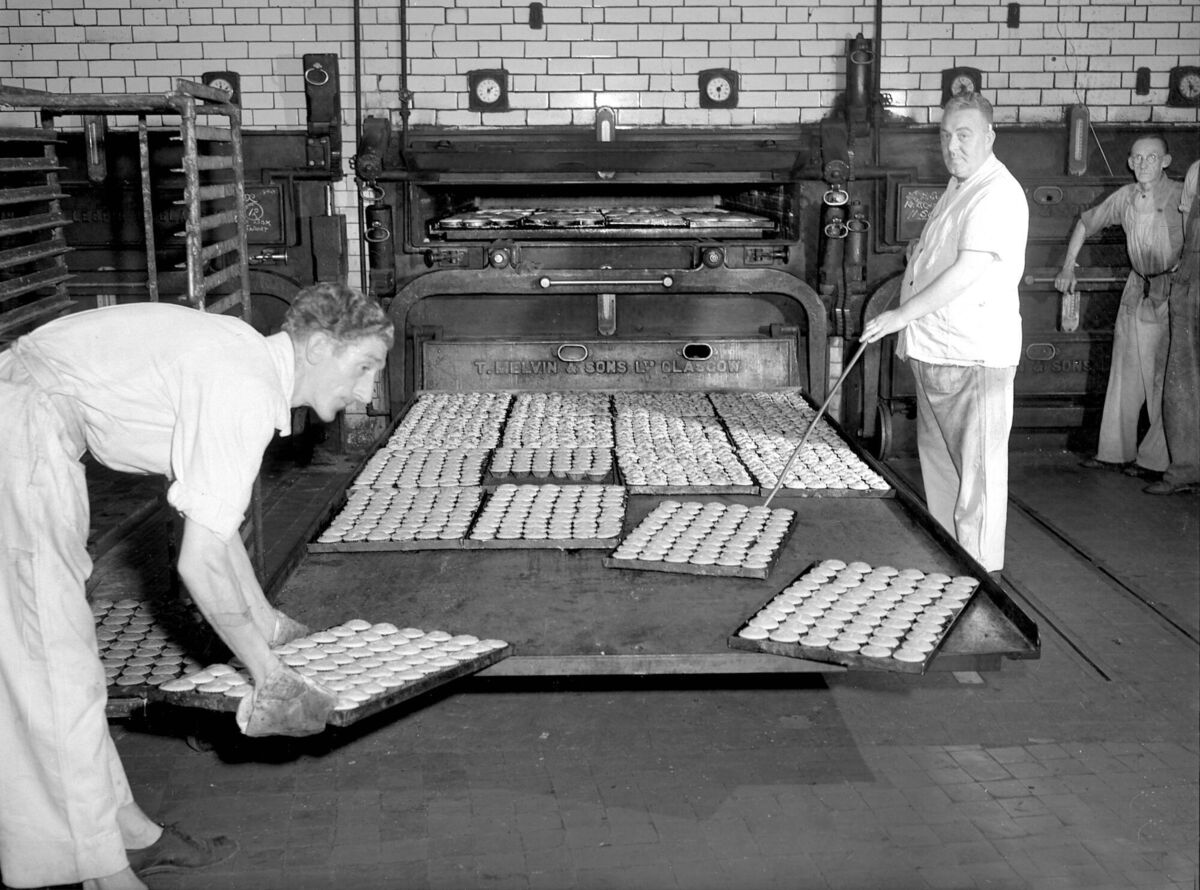
She ate one or two and played with some, but tired soon of it. She knew the ovens were heating up for the second bake of the Donkey’s Gudge and was soon back in position, roasting her left side and watching the world go by with a satisfied stare.
******
Around this time, there were four bakeries on Shandon Street - Ormond & Aherns, Dineens, Donnellys and Creedons - though there were as many as 13 back in the day.
There had been a warren of very old cottages in lanes behind Shandon Street, but by 1965 they had been demolished and the area was an open air playground for the kids of the area.
The Pig Man came for the bread returns with his swill wagon every couple of days, a cart pulled by a pony with two large old oil drums sitting upright on its bed. He collected swill from every house weekly. Every kitchen had a bucket for the Pig Man.
The normal swill from the houses was just tipped into the drums, which were already half filled with water. But the bread, in old paper sugar bags, was just stuffed in around the drums.
The kids used to hang around the pig yard. Pigs were noisy and entertaining and liked their ears scratched. And, although the pony was large, to the kids, he was a gentle animal and they edged close to him. Also, the yard was warm which was a big attraction to children in winter.
Sometimes, the Pig Man would let them help with the swill. It was transferred using a couple of old pots into two other old oil drums set up on old concrete blocks.
A good fire was set under them and when the swill boiled for an hour or so, it was ready. Once cooled, it was fed to the pigs.
They knew when that moment was near and their excitement was huge. The kids got just as excited and joined in with the pigs’ squealing as feeding time got under way.
